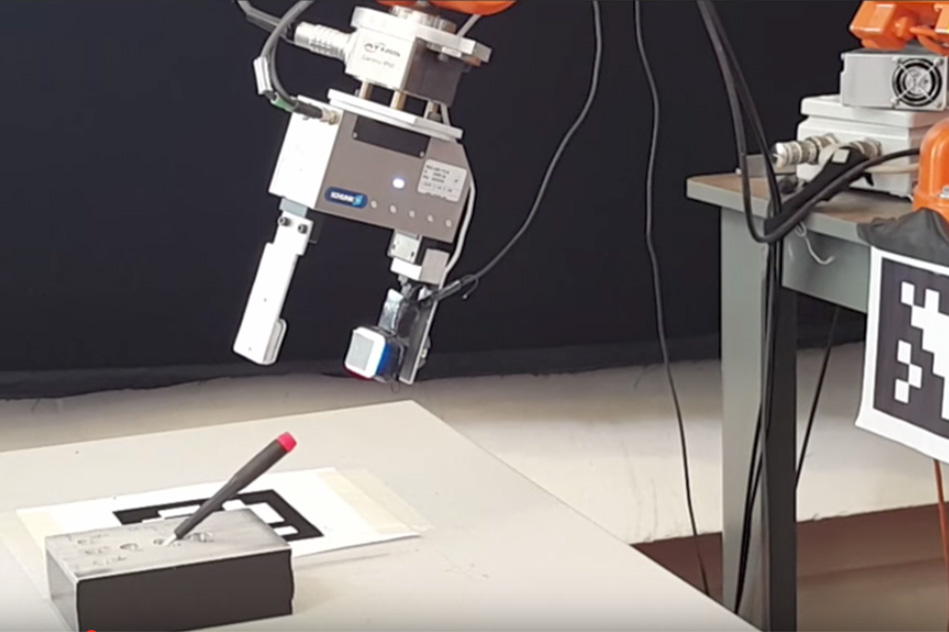Robotics has progressed significantly over the past few decades, moving from simplistic mechanical devices to sophisticated systems capable of complex interactions with their environment. One pivotal development in this domain is the integration of tactile sensors, colloquially referred to as “electronic whiskers.” These sensors endeavor to replicate the sense of touch, enabling robots to understand and interact with their surroundings more effectively. This article elucidates the technological nuances, applications, and potential implications of electronic whiskers in robotics.
Electronic whiskers function as tactile sensors that mimic the biological whiskers found in various animals. These natural appendages are not merely sensory tools; they enable creatures such as rodents, cats, and even dolphins to navigate their environments with remarkable acuity. The principal characteristic of whiskers is their ability to detect subtle changes in the physical environment, including vibrations, texture, and the presence of nearby objects. This biological inspiration leads to innovations in robotics that significantly enhance sensory perception.
The underlying technology behind electronic whiskers often relies on various transduction mechanisms. Commonly employed materials include piezoelectric materials, conductive polymers, and microfabricated components. Piezoelectric materials generate an electrical charge in response to mechanical stress, which can be harnessed to detect pressure or contact. Conductive polymers can change their conductivity based on deformation, allowing for the assessment of touch and pressure in a more nuanced manner. By utilizing microfabrication techniques, researchers can create intricate sensor arrays that provide a high resolution of tactile information.
There are primarily two categories of electronic whiskers: passive and active sensors. Passive sensors are designed to react to external stimuli without actively generating a signal; instead, they rely on the pressure or force exerted on them to respond. Active sensors, conversely, emit signals that are modified upon contact with an external object. This nuanced difference can influence how electronic whiskers are employed in robotic applications.
As the field of robotics seeks to integrate tactile feedback, the applications for electronic whiskers become increasingly diverse. In industrial automation, for instance, robots equipped with electronic whiskers can handle fragile materials without damaging them. The sensory feedback provided by these whiskers enables robots to gauge the appropriate amount of pressure required during manipulation. This precision minimizes waste and maximizes efficiency in manufacturing processes.
Moreover, in the realm of healthcare, electronic whiskers have shown potential in surgical robotics. Tactile sensing can provide surgeons with critical feedback regarding the pressure exerted during delicate procedures. In future iterations, surgeons might utilize robotic systems that can feel—much like human hands—thereby enhancing dexterity and precision in complex tasks such as suturing or tissue manipulation.
This technology also finds relevance in exploratory robotics. Robots deployed in dangerous or inaccessible environments, such as underwater or extraterrestrial terrains, can utilize electronic whiskers to gather spatial information without visible light. For example, underwater vehicles equipped with tactile sensors can navigate murky depths, using the sensory feedback provided by whiskers to detect obstacles and modify their navigation strategy accordingly.
Progress in the development of electronic whiskers has garnered attention beyond mere functionality; it leads to a series of ethical considerations. As tactile sensing technologies become ubiquitous in robotics, the implications of machines replicating human-like sensory capabilities must be examined. Emotional and psychological responses from humans towards robots are likely to evolve as machines exhibit increasingly complex behaviors. This raises fundamental questions about the nature of interaction between humans and robots, particularly as electronic whiskers enable machines to simulate empathetic responses.
An inevitable aspect of this discourse pertains to the potential for tactile sensing to enhance human-robot collaboration. In environments such as manufacturing or elderly care, robots that can “feel” will have enhanced capabilities to assist or work alongside human counterparts. Consequently, it becomes imperative to explore the design of intuitive interfaces that facilitate seamless communication between humans and robots, allowing for collaborative problem-solving in various environments.
Furthermore, the developmental trajectory of electronic whiskers invites inquiries into material science and engineering. The quest for more efficient, resilient, and sensitive materials will undoubtedly drive innovation within the field. Emerging materials, including nanomaterials and bio-inspired composites, may yield electronic whiskers with enhanced performance, opening avenues for applications that remain currently speculative.
In conclusion, electronic whiskers represent a transformative leap in robotics, enabling sensors to emulate the intricate and highly sensitive biological mechanisms of touch. From industrial automation to healthcare and exploratory robotics, these innovations are poised to redefine the capabilities of robotic systems. The intersection of technology and ethics will necessitate ongoing discussions to navigate the implications of machines equipped with such human-like sensory abilities. As we ascend this technological frontier, the potential applications and advancements stemming from electronic whiskers herald a new epoch for robotics, one that is more perceptive and interactive than ever before.












